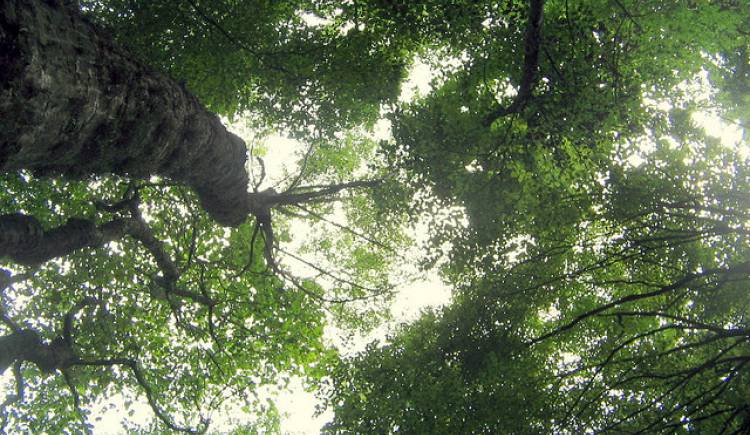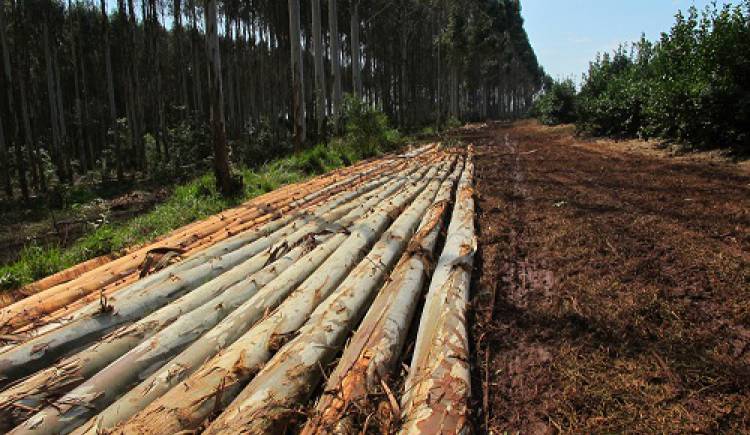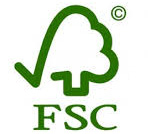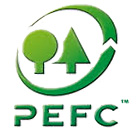Consumers give more and more importance to the certification of sustainable forest management.
The article explains the aspects of the problem and in particular what is the certification.
In recent years, the attention of the public has focused on the need to prevent illegal activities concerning the forests.
The uncontrolled exploitation of forest resources and the progressive degradation of natural ecosystems are often associated with processes of illegality that range from cutting, processing and transporting wood and its derivatives. Forest certification was created about 25 years ago to deal with these problems.
The forest certification was created with the aim of preventing any threat to forest resources through careful planning and monitoring of forest management activities. The forest certification also is the result of the growing need of consumers to have wood products coming from forests managed in a correct manner. The community is increasingly sensitive to environmental issues and, as a consequence, the market increasingly accords preference to products made from wood coming from sustainably managed forests and certified by an independent body.

|

|
The current definition of sustainable forest management, adopted in 1993 by the Ministerial Conference for the Protection of Forests in Europe, is this:
"Sustainable forest management consists of using forests at a rate of utilization that allows them to maintain their biodiversity, productivity and capacity for renewal. Furthermore, forest management must fulfill important ecological, economic and social functions without causing damage to other ecosystems ".
The certification of Sustainable Forest Management is the certification provided by an independent body that declares that the management of controlled forests complies with internationally recognized standards.
The wood obtained from certified forests and woods can be clearly recognized through a mark in order to remain traceable in the various phases of subsequent processing up to the finished product.
This certification provides the end consumer with the guarantee that products of forest origin (wood or its derivatives, such as cellulose) derive from forests managed in a legal and sustainable manner and do not come from illegal cuts or irresponsible interventions that can lead to destruction forest resources.
The convenience of forest certification for a forest owner or for a wood and paper processing company is the preference accorded by the consumer to the certified product, a preference which also translates into the willingness to pay a higher price.
For the Public Administrations that own woods, ethical values also take place. In fact, the certification of forest management allows us to "communicate" to the public that the forests are managed in a sustainable manner from a social and environmental point of view, adapting themselves to internationally recognized criteria of good forestry practice.
The forest certification, therefore, is a useful marketing tool, an opportunity to formalize the entrepreneurial commitment to the environment and, at the same time, a commitment to the promotion of a careful and correct management of the woods.
There is also a second type of certification called “Chain of Custody” (CoC).
If the manufactured article obtained with wood (or other derivatives) complies with the conditions of the “Chain of Custody", it too will be recognizable by the final consumer through a special mark.
The possession of a valid Chain of Custody certification is a useful condition to be able to sell a product as certified. Thanks to this certification, an organization can guarantee the market about the origin of the wood used for the product and therefore demonstrate its active contribution to responsible forest management.
Currently there are two important forest certification schemes in the world: the Forest Stewardship Council (FSC) and the Program for Endorsement of Forest Certification schemes (PEFC).
The FSC certified area in the world is about 180 million hectares.
The PEFC certified area is about 304,000 hectares (in Italy 54,000).
The forest owners of the FSC in the world are about 150,000.
The forest owners of PEFC are 750,000 (in Italy 24,000).
 The FSC certification system
The FSC certification systemThe FSC (Forest Stewardship Council) certification guarantees that the FSC labeled product comes from a responsibly managed forest and supply chain.
To obtain the FSC certification it is necessary to respect ten rules that cover the essential aspects of responsible forest management. Anyone can become a member of the FSC.
The FSC requires forest managers to involve members of local communities in decision-making processes and to protect the rights of indigenous peoples, thereby ensuring that their voices are an integral part of the certification process. The FSC also requires that the result of certification checks be made public. This is a distinctive character compared with the the other system PEFC.
In its 25 years of activity, the FSC has won the reputation of a credible and rigorous forest certification system.
FSC is an independent organization led by its members, organized into three chambers (social, environmental and economic) that have equal decision-making power. The members themselves elect the Board of Directors and make the most important decisions. The FSC headquarters are in Bonn (Germany).
FSC forest management standards include the protection of water quality, prohibit the cutting of ancient forests and the use of highly toxic chemicals.
FSC releases three types of certifications:
• Forest Management - It is issued to forest managers and owners whose management practices meet the 10 Principles and 70 Criteria (Principles & Criteria, P & C) of responsible forest management.
• Chain of Custody (CoC) - Chain of Custody certification (CoC) guarantees the traceability of materials from FSC-certified forests and is indispensable for applying FSC labels to products.
The possession of a valid FSC Chain of Custody certification is a necessary condition to be able to sell a certified product.
• Controlled Wood (CW) - This category has been designed to allow companies to avoid those types of wood considered "unacceptable".
The "Controlled Wood" is a wood that can be mixed with the certified one.
For more information about the FSC system, you can visit its website that contains all the details and all the information necessary for those who want to request certification: it.fsc.org
 The PEFC certification system
The PEFC certification systemThe Program for Endorsement of Forest Certification (PEFC) is an international certification system for sustainable forest management.
The General Secretariat of the PEFC Council is based in Switzerland.
The PEFC scheme was developed in 1998 primarily by forest owners and by the European wood industry to facilitate the mutual recognition of national forest certification schemes.
More than 232 million hectares are certified according to the PEFC system, mostly in Canada, the United States, Finland, Norway, Sweden, Germany, France and Austria, Brazil, Chile, Australia, Gabon, Russia, Malaysia.
The PEFC also manages the second type of certification called "chain of custody" (Chain of Custody - CoC).
In Italy there are currently 803 companies certified with the "chain of custody" (for furniture, packaging, parquet, paper, construction, carpentry, publishing, games, etc.) managed by PEFC.
The main feature of PEFC compared to the Forest Stewardship Council (FSC), consists in being particularly suitable for small forests, that is small private woods and also woods not suitable for industrial purposes, owned by hundreds of thousands of families.
In the world, the certified forest area of PEFC stands at about 304,000 hectares (in Italy 54,000). The forest owners of PEFC are 750,000 (in Italy 24,000). The CoC certificates are 20,000 for the PEFC (in Italy around 800).
For more information about the PEFC system you can examine its site that contains all the details and all the information necessary for those who want to request certification www.pefc.it
From March 3, 2013, Regulation 995/2010, better known as EU Timber Regulation (EUTR), came into force in Europe and applies to wood and all products derived from it.
For companies that introduce wood fiber based products into Europe, the regulation prohibits the placing and trading of products of illegal origin and obliges the adoption of an internal system of due diligence.
The regulation, among other things, illustrates the requirements that must be met by the independent verification schemes (FSC and PEFC). It also specifies the methods, nature and frequency of the checks to be carried out by the individual national competent authorities.
So far, the EU has decided not to recognize any forest certification scheme as an automatic test of compliance with the requirements of the EUTR, but it is foreseeable that operators in possession of an FSC or PEFC certification will be considered less "risky" for the EUTR.
To find more information about the EUTR regulation click here
Rinaldin is particularly sensitive to the problem of forest certification. For its supplies always gives preference to suppliers who give precise guarantees of responsible management of forests.